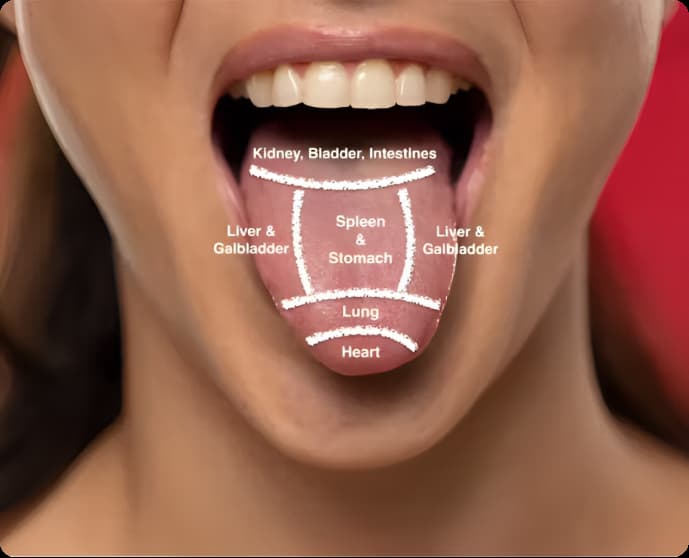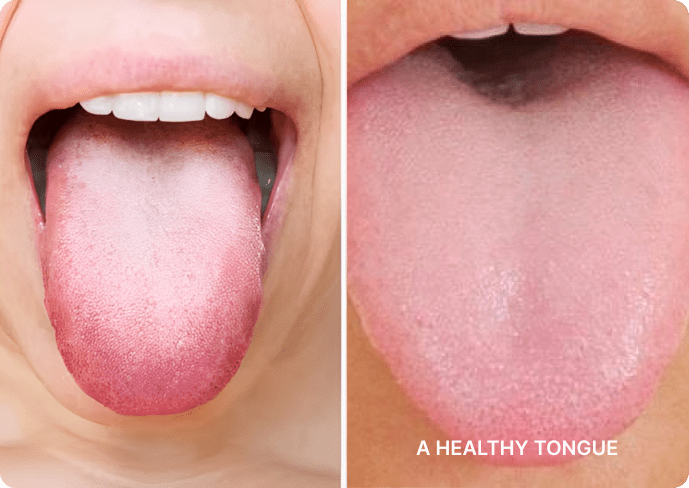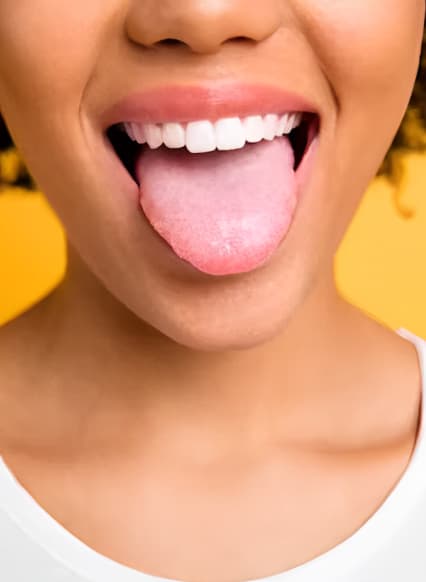Your Tongue, It Tells All
Tongue analysis is the first step toward unlocking health secrets, and a guide to holistic diagnosis.

From the tip of your tongue,to your overall health.

Tongue diagnosis is a fundamental tool in traditional Chinese medicine to accurately assess a patient‘s health. It’s often the first step in diagnosing deeper imbalances or underlying conditions.
Why is that? The tongue is really considered a reflection of the internal state of your body and its organs. Practitioners believe that the appearance of the tongue, including its color, shape, coating, and moisture, can act as a roadmap to your health

So, what does a “normal” or relatively healthy looking tongue look like? It’s a fresh, pink color. The thickness is about at a medium thickness (tough to gauge, but we can help clarify!) and a light white coat on it that can be scraped off easily (this is also called rooted). Being healthy, it’s free of cracks, spots, ulcers, or teeth marks.
Everyone’s tongue is just as unique as their body’s constitution.
Accurate tongue diagnosis is a skill that Chinese Medicine doctors spend four years mastering in school and sharpening in practice to help aid in their methodologies.

Diagnose your tongue, diagnose your health
What can you tell from looking at my tongue?
From anemia to poor circulation, inflamed organs and digestive problems. Expert Chinese medicine doctors, like the ones at Qi, can get a comprehensive understanding of your wellbeing or lack thereof, from studying and examining your tongue.
That being said, tongue diagnosis is just one part of a holistic TCM assessment.which also includes patient history, and observation of other physical and emotional characteristics.Our TCM practitioners use these tools together to develop a comprehensive understanding of your condition and recommend suitable herbnal medicine treatments, dietary changes, and lifestyle adjustments.

Reveal the true color
First, TCM practitioners check the color of the tongue for potential imbalances. Different colors are associated with specific organ systems and elements. A good example? A pale tongue might indicate blood deficiency, while a red tongue could suggest heat or inflammation.

See the layers
The layer, or coating refers to the tongue's surface. Thin or thick, and the color, texture, and distribution matters. A thick, greasy coating might indicate dampness or phlegm, while a lack of coating could suggest heat or dryness.

All shapes, all sizes
The shape and size of tongues reveals information about your body's internal organs and overall constitution. A swollen or puffy tongue might indicate fluid retention or digestive issues, while a thin or atrophic tongue could be related to a deficiency.

Check moisture levels
How moist the tongue is can provide insights into the body's fluid balance. A dry tongue might be associated with a deficiency of Yin (fluids), while an excessively moist or swollen tongue could be linked to dampness.

Rough patches?
Seeing cracks, fissures, or patches on the tongue's surface can also provide clues to your health. Since different areas of the tongue correspond to different organ systems, abnormalities in those areas might indicate imbalances.
